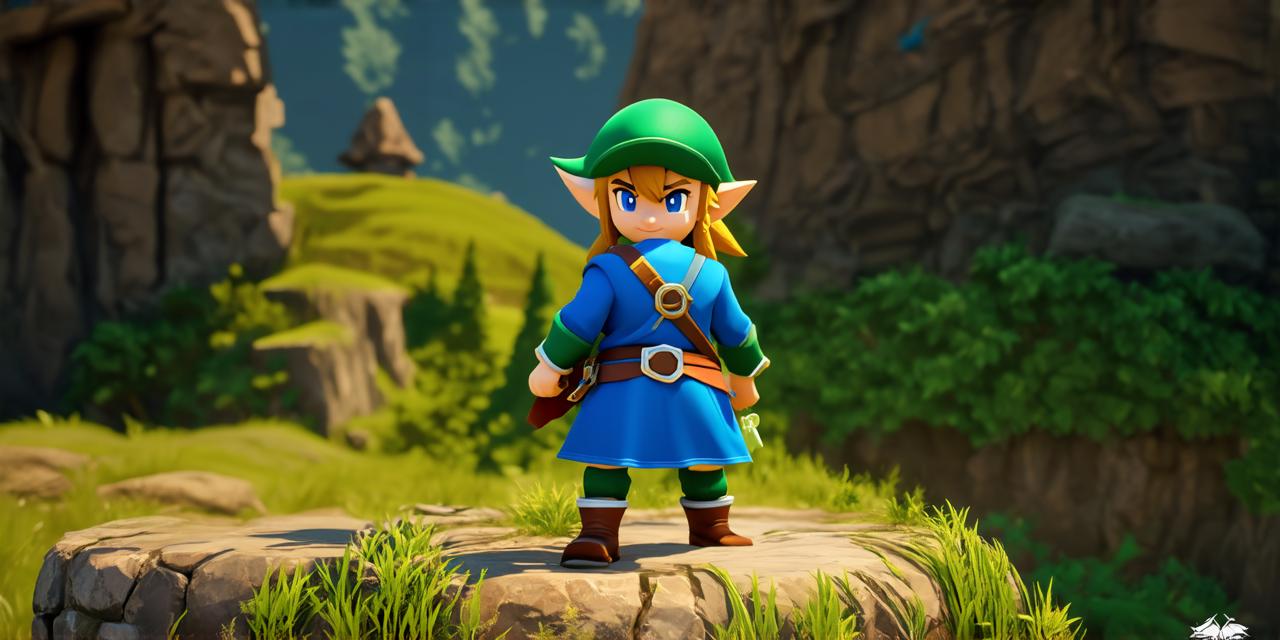Ocarina of Time is a classic video game that has captivated players for decades. It was released by Nintendo in 1998 and quickly became one of the best-selling games of all time. The game’s immersive world, intricate storyline, and engaging combat system have made it a favorite among fans of action-adventure games.
Challenges of Recreating Ocarina of Time in Unreal Engine 5
One of the biggest challenges involved in recreating Ocarina of Time in Unreal Engine 5 is replicating the game’s unique visual style and art direction. The game features a cel-shaded art style, which gives it a distinctive look that has become synonymous with Nintendo’s games. Recreating this style in Unreal Engine 5 would require a lot of work and expertise in both art and programming.
Another challenge is replicating the game’s complex combat system, which involves a variety of weapons, shields, and magic spells. The combat system was designed to be intuitive and engaging, with players able to chain attacks together and use different strategies to defeat enemies. Recreating this system in Unreal Engine 5 would require a deep understanding of game mechanics and programming.
Finally, the game’s immersive world would need to be replicated in Unreal Engine 5, including its various environments, characters, and NPCs. This would require a lot of work in both art and design, as well as programming to ensure that the environment is interactive and engaging for players.
Benefits of Recreating Ocarina of Time in Unreal Engine 5
Despite the challenges involved in recreating Ocarina of Time in Unreal Engine 5, there are also many potential benefits to doing so. One of the biggest advantages would be the ability to bring the game to new platforms and audiences. While Ocarina of Time was originally released for the Nintendo 64, it has since been ported to a variety of platforms, including PC and mobile devices. Recreating the game in Unreal Engine 5 could allow it to reach even more players and generate new revenue streams for the game’s creators.
Another benefit would be the ability to enhance the game’s graphics and visual effects. With the power of Unreal Engine 5, it would be possible to create stunning 3D environments and characters that were previously impossible in the original game. This could make the game even more immersive and engaging for players, and potentially attract new audiences who were previously uninterested in the game.
Finally, recreating Ocarina of Time in Unreal Engine 5 could also allow for new gameplay mechanics and features to be added to the game. With the flexibility of Unreal Engine 5, it would be possible to add new weapons, enemies, and puzzles to the game, as well as enhance existing ones. This could make the game even more replayable and engaging for players, and potentially attract new audiences who were previously uninterested in the game.
Summary
In conclusion, recreating Ocarina of Time in Unreal Engine 5 as a full game would be a challenging but rewarding endeavor. While there are many technical challenges involved in replicating the game’s visual style, combat system, and immersive world, there are also many potential benefits to doing so, including the ability to bring the game to new platforms and audiences, enhance its graphics and visual effects, and add new gameplay mechanics and features. Whether or not it is possible to fully recreate Ocarina of Time in Unreal Engine 5 remains to be seen, but it is clear that the game’s legacy continues to inspire and influence game developers today.
